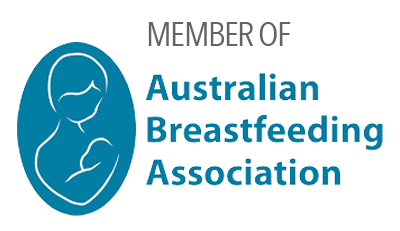What is It?
Dream Feeding is when you pick your baby up in the evening (while they are sleeping) and offer them a breastfeed or bottle feed. The idea behind this is to encourage your baby to sleep for longer stretches at night so parents have a longer uninterrupted sleep.
The Science Behind It
Looking after a newborn can be exhausting. Feeding them every few hours and especially throughout the night can really take its toll on parents. However if you go to bed soon after your baby has had a good feed you just might be able to get a longer stretch of consistent sleep.
Why is consistent sleep so important? Our brains are programmed to prioritise deep sleep within the first few hours of going off to sleep. Therefore, the first 4-5 hours of sleep should be protected from any interruption. Despite this, it can be impossible to have the right amount of sleep in the first few days after the birth of your baby, so try to get in at least a few 30 minute naps during the day to help you feel less sleep deprived.
The Benefits
This Practice may result in longer stretches of sleep for both babies and parents. However, the most effective strategies involve combining dream feeding with good sleep behaviours to help with long term successful sleep habits.
Potential Drawbacks
This practice is not usually recommended for those who have not yet reached their desired weight or are having trouble gaining weight. It’s best to discuss this technique with your paediatrician or maternal and child health nurse before you implement a dream feed into your child’s nighttime routine. If your baby has reflux, the occasional dream feed can be used as an intermittent solution to your baby’s issues, but should not replace regular feeding — in fact, there is a good chance that attempting to do so can worsen your baby’s reflux symptoms.
How to Implement Dream Feeding Safely & Effectively
Once you have discussed (with your paediatrician or maternal and child health nurse) the possibility of utilising this technique (and gotten the go ahead from them), you can start implementing it by following my step by step guide.
To dream feed, gently pick up your baby while they are still sleeping and place them on your breast or bottle by lowering their lower lip to encourage attachment, making sure you do not wake them. Once your baby has finished, pop them over your shoulder gently to allow for any wind to come up using gravity. Babies don’t necessarily need to be burped after a dream feed, as the feed is so relaxed and doesn’t tend to take in too much air. Once you have done these steps then you will gently lay your baby back down and allow for them to continue their sleep.
What does a typical nighttime routine look like?
6:00 pm-6:15pm: milk feed
6:30 pm: bedtime routine – bath, book
7:00 pm: Bedtime
10:00 pm: Dream feed
When to Start & How Often to Dream Feed
 You can start to implement a dream feed when you start seeing a little bit of a pattern forming in your baby’s daily routine. It’s usually recommended from around 6 weeks old. Dream Feed your baby just before you are about to go to bed to extend their sleeping time — I usually like to recommend a 10PM dream feed each night.
You can start to implement a dream feed when you start seeing a little bit of a pattern forming in your baby’s daily routine. It’s usually recommended from around 6 weeks old. Dream Feed your baby just before you are about to go to bed to extend their sleeping time — I usually like to recommend a 10PM dream feed each night.
Choosing the Right Feeding Position
Feeding your baby in your normal feeding position is recommended so your baby does not choke during the dream feed. Please do not dream feed your baby in their cot as this can be a choking hazard.
Monitoring Your Baby’s Sleep Patterns
It’s completely normal if your baby wakes again during the night for a subsequent feed. As your baby grows their feeding demands will reduce and they will be able to sleep for longer stretches at night.
Does Dream Feeding Work?
I definitely like to encourage parents to give the technique a go as it can be a very effective method of extending stretches of nighttime sleep. In some situations it may not work for everyone, and for some babies can actually increase the amount of nighttime wake ups due to the disruption of their natural sleep rhythms.
Common Questions and Concerns
Can It Affect Milk Supply?
If you are breastfeeding and would like to offer expressed breast milk in a bottle for your partner to give your baby, make sure you are expressing at the same time your baby is dream feeding so you are able to maintain your supply. Night feeds are important to maintain milk supply, so don’t be tempted to give a fully breastfed baby a bottle of formula for the dream feed in hopes that this will extend your baby’s sleep — it can very likely do the opposite (and also lower your milk supply if not managed properly).
What if My Baby Wakes Up During The Feed?
If your baby wakes during the feed, don’t worry, just carry on with the feed. Once your baby has finished, just put your baby back into bed and allow them to settle.
Final Thoughts…
There can be many different reasons why your baby may wake overnight, so if you are finding that your baby is waking frequently even when implementing a dream feed, it’s worth considering other factors that could be contributing to that such as your baby being under or overtired, the sleep environment, or a settling issue, just to name a few.
I can help take the guesswork out of your baby’s sleep and give you the confidence to make sure everything is lined up to give them the best chance to sleep well overnight and during the day. I am available to help you to determine whether dream feeding might benefit you and your baby. I also have helpful sleep training programs available that are designed to adapt to your child’s unique sleeping style. Contact us today for more information!




